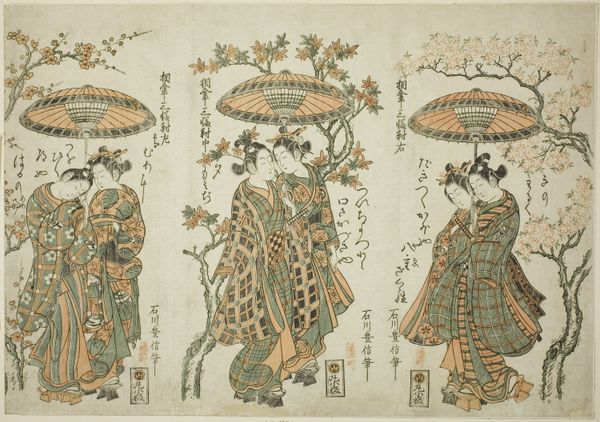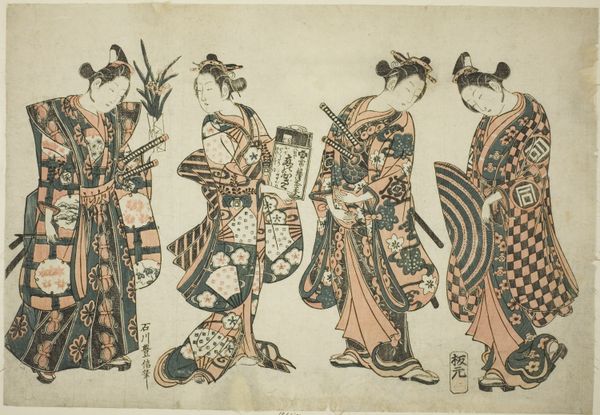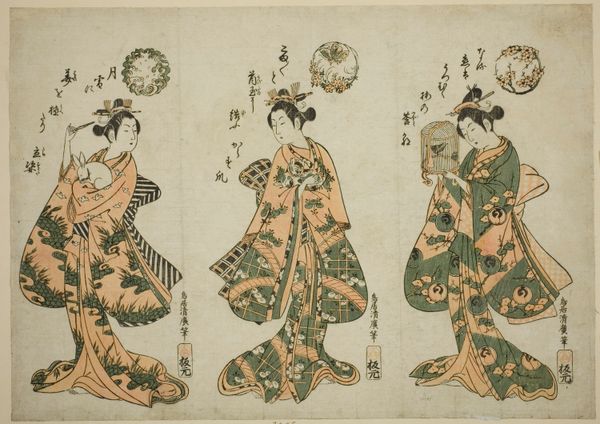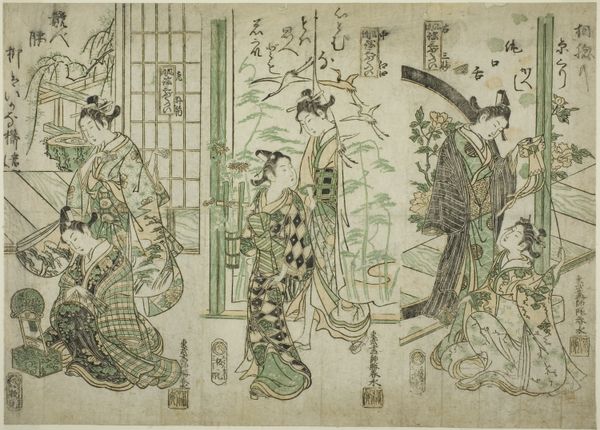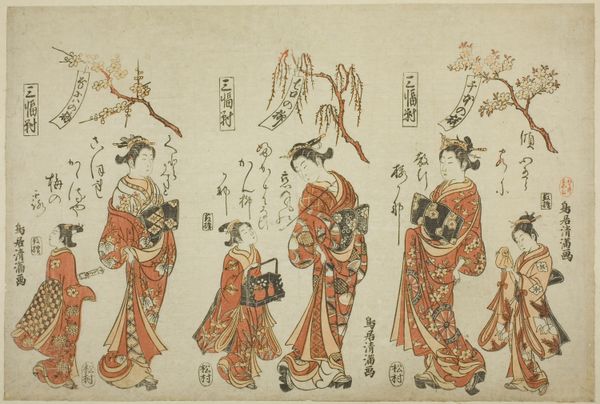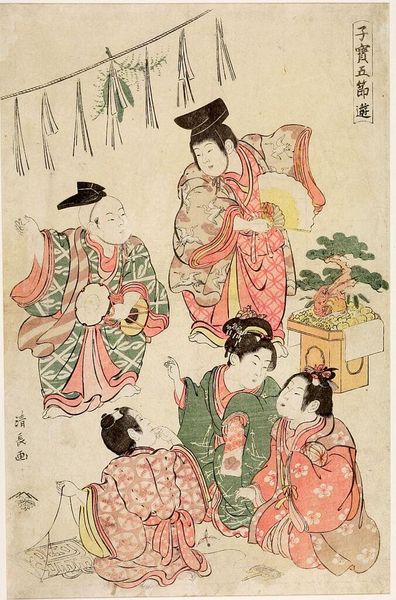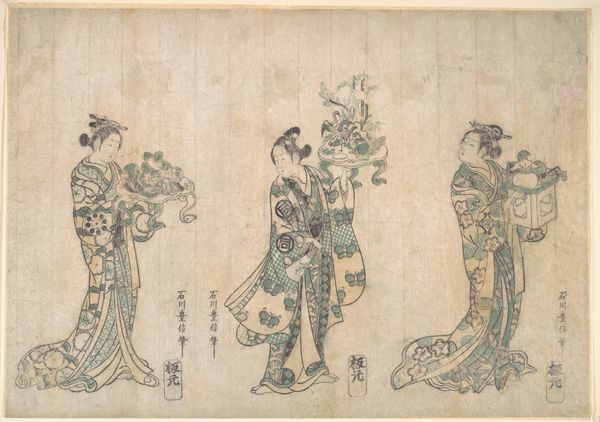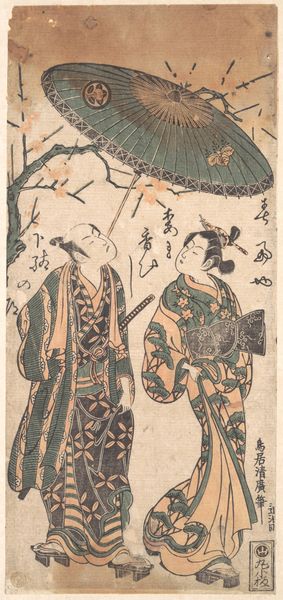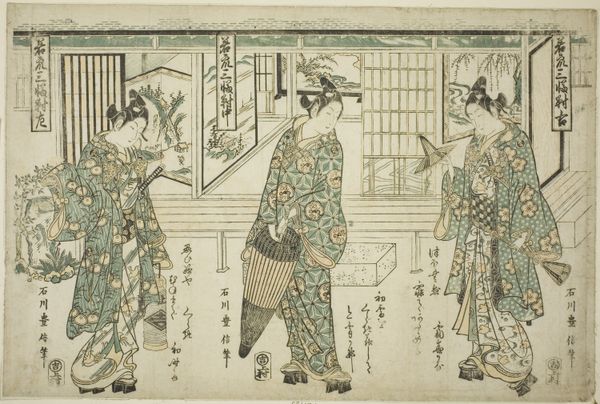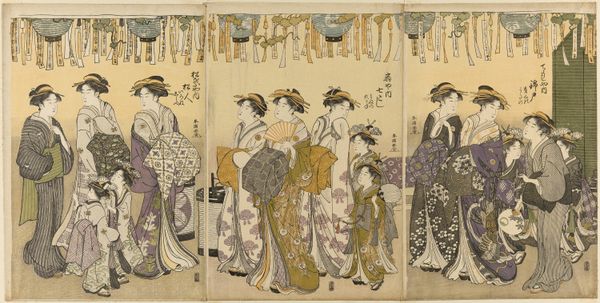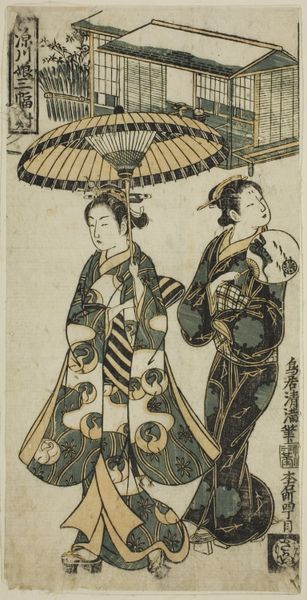
Girls of Fukagawa - A Triptych (Fukagawa musume sanpukutsui) c. 1755
0:00
0:00
painting, print, watercolor, woodblock-print
#
water colours
#
painting
# print
#
asian-art
#
ukiyo-e
#
japan
#
figuration
#
watercolor
#
woodblock-print
#
genre-painting
#
mixed media
Dimensions: 11 1/4 × 16 13/6 in.
Copyright: Public Domain
Curator: Looking at this remarkable c. 1755 triptych print titled "Girls of Fukagawa" by Torii Kiyohiro, I am struck by its almost cinematic quality, wouldn't you say? The composition directs the viewer’s eye across a landscape inhabited by these distinct figures. Editor: Indeed! Immediately I feel the weight of representation, thinking about these women within their socio-economic landscape of the Fukagawa district. Their refined attire and purposeful gestures tell a curated story of femininity and labor, wouldn’t you say? It speaks of social dynamics through dress and posture. Curator: Absolutely, their kimonos and adornments are not mere decoration; they encode status and perhaps even allegiance to certain merchant families, wouldn’t you say? The artist uses the umbrella as a shield of the privileged, a motif loaded with the power that only few possess. Look at the arrangement, those details are never an accident, right? Editor: Exactly, the umbrella situates them in relation to commerce. These women might not have been merchants themselves, but were certainly a vital element to commerce: serving as a lure to the Fukagawa pleasure district. The triptych format invites this comparative reading, the interplay between visibility and the covered status creates complex and coded conversations about female roles at the time. Curator: Considering Torii Kiyohiro was known for his portraits of actors, wouldn't you agree the theatricality translates into these portraits of women? The fan becomes a crucial prop as it holds so many symbolical levels. We cannot neglect the Kabuki influence here. Editor: I would only add that their controlled movements suggest a performative aspect that wasn't just theatrical but social. What roles were imposed on women and how did these images challenge or reinforce them? It gives us clues about the tight social choreography happening then. Curator: Well, examining how symbolic images are used to express identity helps me interpret their position in cultural memory and what the collective desires for women look like in this time period. This helps me connect it to current beauty standards today and what is culturally praised, but with what intention? Editor: Yes, understanding that relationship can ignite crucial conversations. Examining social structures of the past with current conversations about gender, class, and societal expectation of female image is so important. It becomes more than just appreciating the aesthetic beauty; it transforms it into a platform to help critically access visual symbols from history.
Comments
No comments
Be the first to comment and join the conversation on the ultimate creative platform.
